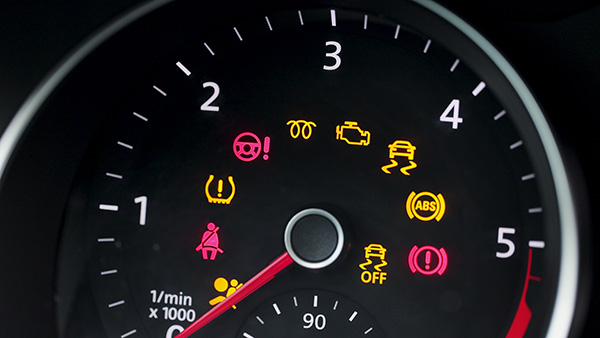
Dashboard warning lights are your car’s way of telling you something needs attention. While some lights indicate minor issues, others warn of serious problems that could lead to breakdowns or expensive repairs if ignored. Understanding what these lights mean and taking action quickly can save you time, money, and potential safety risks. Here are six dashboard warning lights you should never ignore and what they mean for your vehicle.
1. Check Engine Light
The check engine light is one of the most common warning indicators, but it can signal anything from a loose gas cap to a major engine malfunction. If this light appears and stays on, your car’s onboard diagnostics system has detected an issue.
- If the light is steady, the problem may not be an emergency, but you should get your car checked soon.
- If the light is flashing, it indicates a severe issue, such as an engine misfire, which could cause permanent damage if ignored.
- Even if your car seems to be running fine, it’s best to schedule a diagnostic check to prevent minor issues from turning into costly repairs.
2. Battery Warning Light
A red battery icon on your dashboard means there’s an issue with your vehicle’s charging system. This could be due to a weak battery, failing alternator, loose cables, or corroded connections.
If this light comes on while you’re driving, your car could stall at any moment. It’s a sign that your battery isn’t charging properly, and you may only have a limited time before the car completely loses power. Addressing this issue quickly can prevent unexpected breakdowns and costly towing fees.
3. Oil Pressure Warning Light
The oil can symbol indicates low oil pressure, which means your engine may not be getting enough lubrication. This can lead to friction between engine components, overheating, and serious engine damage.
Common causes include:
- Low or dirty engine oil
- A failing oil pump
- A clogged oil filter
If this light comes on, pull over as soon as it’s safe, check your oil level, and call a professional. Driving with low oil pressure can cause catastrophic engine failure.
4. Brake Warning Light
Your brakes are one of the most critical safety components in your vehicle. If the brake warning light illuminates, it could mean:
- Low brake fluid levels
- Worn brake pads
- Issues with the anti-lock braking system (ABS)
If your brake pedal feels soft or unresponsive, or if you hear grinding or squealing noises, do not ignore this warning. Braking issues can put you and other drivers in danger, so have your car inspected immediately.
5. Temperature Warning Light
A thermometer icon or overheating warning means your engine is running too hot. Overheating can be caused by:
- Low coolant levels
- A broken thermostat
- A failing water pump
- A radiator issue
If this light comes on, turn off the AC and pull over safely as soon as possible. Driving with an overheating engine can lead to warped cylinder heads, a blown head gasket, or even complete engine failure.
6. Tire Pressure Warning Light
The tire pressure monitoring system (TPMS) light looks like an exclamation mark inside a flat tire. It warns you that one or more of your tires is underinflated, which can:
- Reduce fuel efficiency
- Affect handling and braking
- Increase the risk of a blowout
Check your tire pressure as soon as possible and inflate the tires to the recommended PSI. Driving with low tire pressure for too long can lead to uneven tread wear and costly replacements.
Ignoring a dashboard warning light could cost you big. Let the professionals at Atlanta Car Care in Atlanta, GA, inspect your car and fix the issue before it gets worse. Book your service now!